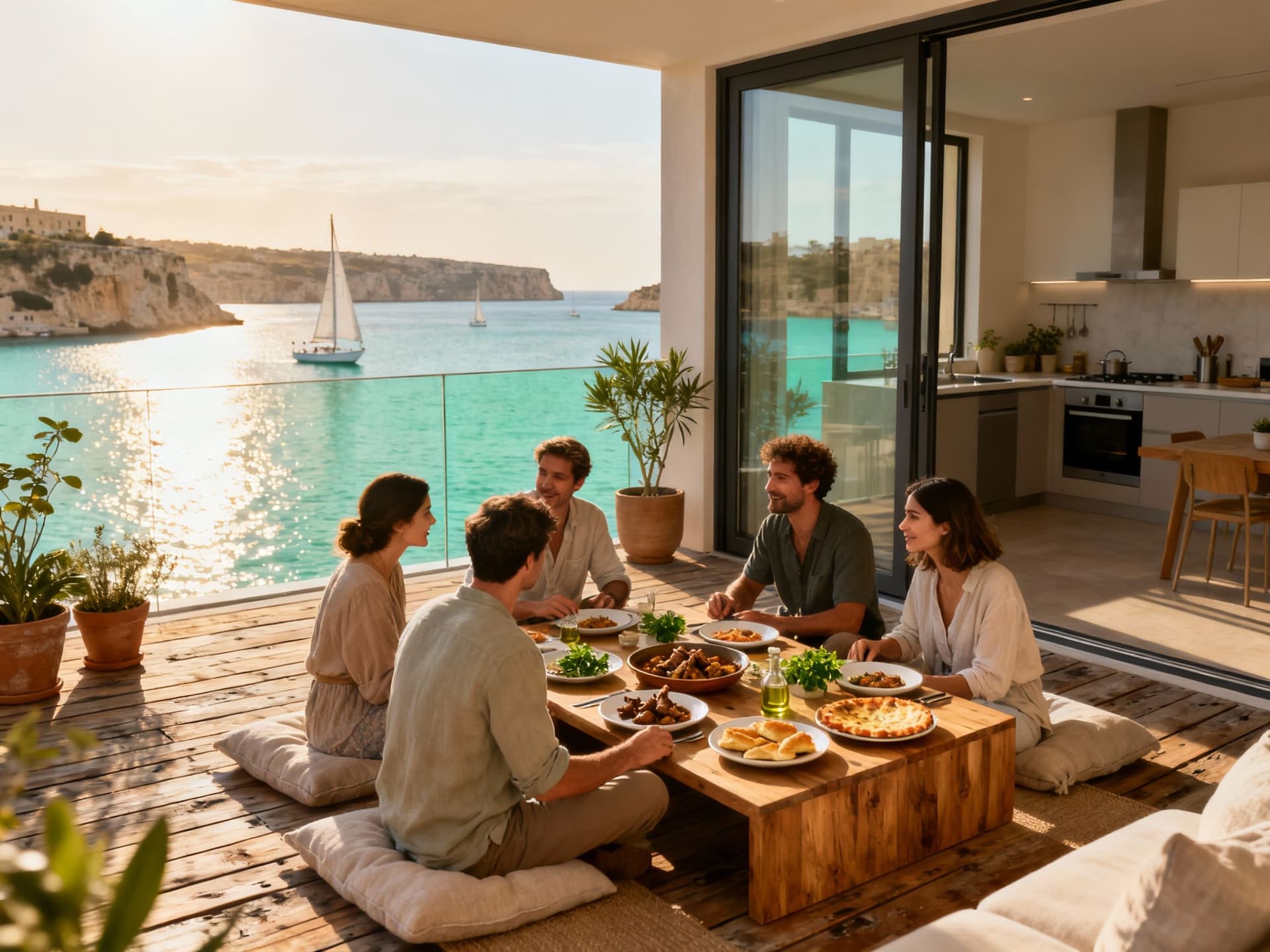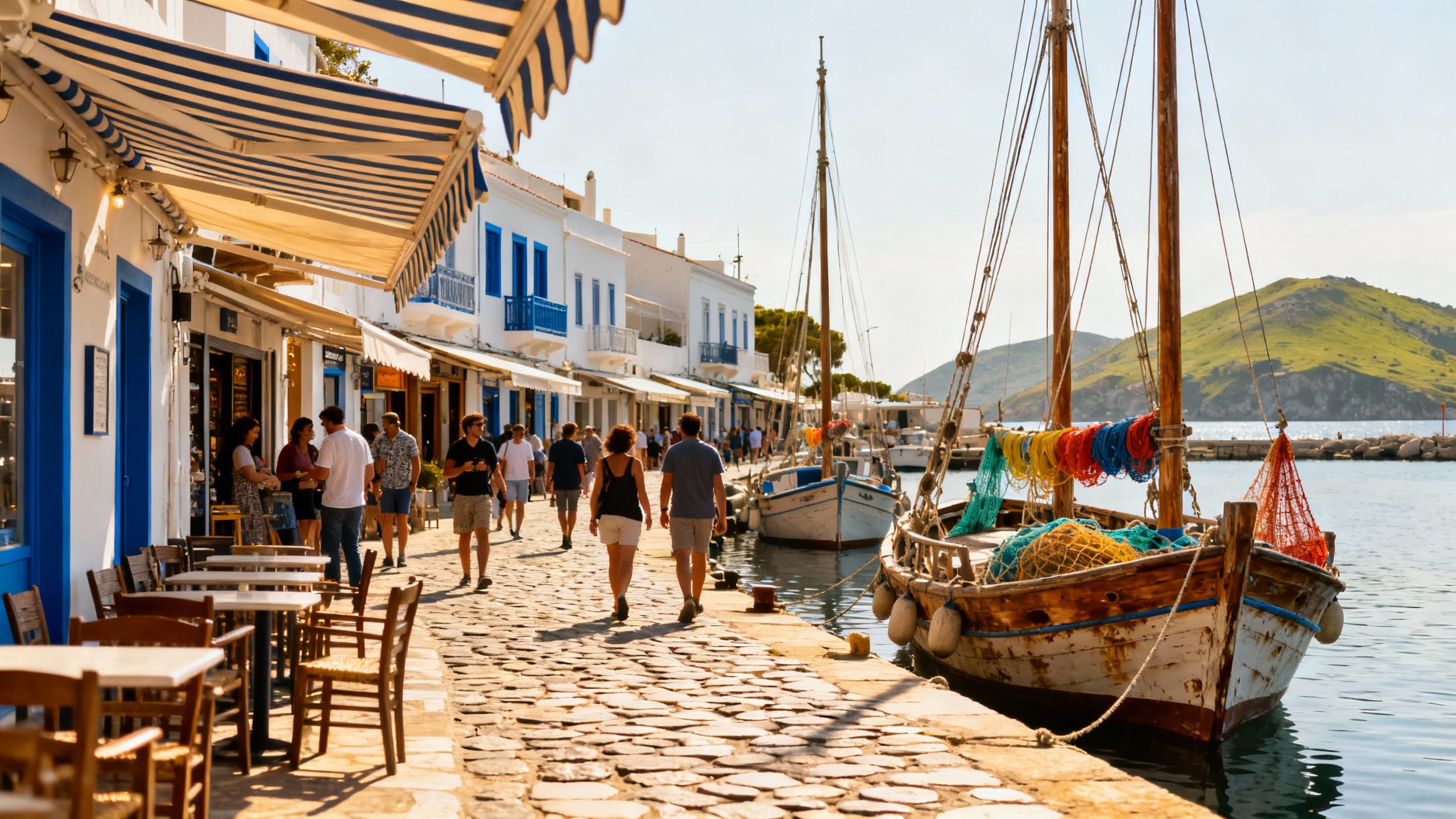Why Malta’s 'Tourist Premium' Masks Real Rental Yields
Malta’s tourist boom coexists with steady expat demand; model net yields after costs and seasonality to find where reliable rental returns outpace headline premiums.
Imagine starting your day with espresso on a balconied street in Sliema, then walking fifteen minutes to a co‑working hub on the seafront. Malta feels compact: historic limestone facades, narrow lanes in Mdina, manicured apartment blocks in St Julian’s and the sea as a constant backdrop. That compactness is why landlords and investors read the market differently here — tourism squeezes occupancy seasonally, but high demand for medium‑term and long‑term rentals cushions returns. This piece looks beyond the sun‑and‑sea headline: where yields actually live, what the tourist boom means for landlords, and the practical trade‑offs international buyers should weigh.
Living the Malta Life

Picture weekday mornings in Valletta: delivery vans weaving past Baroque facades, office workers grabbing pastizzi, and cruise‑day ripples raising short‑let demand. Tourist arrivals topped 3.5 million in 2024, a figure that reshapes rental patterns but doesn't translate linearly into higher long‑term yields. For an investor, that means understanding where tourism boosts seasonal income versus where steady local demand underpins net yield.
Neighbourhood snapshots: the tradeoffs
Sliema and St Julian’s — polished seafront living, high price per square metre and strong short‑let interest; Valletta — premium rents for compact historic units but smaller floorplates; Gzira and Ta' Xbiex — steady ex‑pat rentals near business hubs; Gozo — lower prices, quieter market and niche tourism yields. Each area trades capital growth, vacancy risk and operating costs differently. Match your yield target to neighbourhood dynamics rather than chasing the most photographed postcard.
Food, ritual and rhythm: how lifestyle shapes occupancy
Weekends in Marsaxlokk market, summer festa processions, and winter neighbourhood cafés all matter to tenants. English as an official language and a strong expatriate community keep year‑round demand for 1–2 bed apartments from professionals and remote workers. That mix—tourists, expats, local renters—creates different vacancy profiles across the year and affects achievable net yields.
- Lifestyle highlights that influence demand
- Morning espresso culture and waterfront promenades (Sliema seafront, Spinola Bay).
- Sunday markets and fishing‑village weekends (Marsaxlokk).
- Cultural calendar peaks: Valletta International Baroque Festival and village festas affecting seasonal occupancies.
Making the Move: Practical Considerations

The lifestyle is immediate; the math is less sentimental. Malta’s Residential Property Price Index rose by around 5–6% year‑on‑year in recent quarters, pushing average prices to multi‑year highs. Rising prices compress gross yields unless rents rise faster or operating costs remain controlled. International buyers should stress‑test properties for net yield after management fees, variable utilities, insurance, and seasonal vacancy.
Property types and what they return
Small historic flats in Valletta can deliver high rent per sqm but require higher maintenance and may have lower energy efficiency. Modern apartments in Sliema/St Julian’s attract premium short and long‑lets but cost more per sqm. Maisonettes and terraced houses suit families seeking medium‑term lets and often present better net yields per purchase price due to lower entry cost outside prime harbourside strips.
Working with local experts
A good local agent in Malta is more than a listing pipeline: they know municipal zoning quirks, short‑let licensing updates, and which blocks routinely underperform for rentals. Legal counsel familiar with non‑EU acquisition rules and a property manager who understands tenant seasonality reduce operational surprises. For international buyers, choose advisers who can show track records of net yield after all costs, not just headline rents.
- Steps to test a Maltese rental purchase
- 1. Calculate gross yield: (annual rent ÷ purchase price) × 100.
- 2. Subtract operating costs: management (8–15%), maintenance reserve, insurance, taxes and vacancy buffer.
- 3. Model seasonality: use local occupancy data and tourist arrivals to stress seasonal rental income.
- 4. Run a five‑year scenario: rental growth assumptions, potential capex, and exit price sensitivity to the RPPI trend.
Insider Knowledge: What Expats Wish They’d Known
Expats often arrive chasing the residency or passport headlines; recent European Court rulings have dismantled Malta’s investor citizenship scheme, which changed some investor behaviour and the profile of long‑stay buyers. That legal and political backdrop matters because past demand from program participants distorted certain neighbourhoods and left a stock of under‑used properties. Today’s market is more tourism‑and‑work driven — a healthier baseline for rental investors who value predictable demand over political tailwinds.
Cultural practicalities that affect tenancy
Malta’s bilingual environment reduces friction for English‑speaking tenants, but building rules, communal maintenance funds and traditional Maltese lease expectations can surprise newcomers. Expect stronger demand for furnished 1–2 bed units near business hubs and reliable transport. For family rentals, proximity to international schools in Pietà and Swieqi drives premiums and longer tenancies.
Longer‑term lifestyle economics
Malta’s compact geography limits large scale suburban sprawl; that scarcity supports capital growth but also means affordability squeezes local incomes. For investors, the key is balance: accept slightly lower gross yields in prime nodes for reliability, or target emerging pockets (northern/southern peripheries, Gozo) where price per sqm is lower and upside remains. Diversify by tenure: mix long‑lets for stability and regulated short‑lets for seasonal upside.
- Red flags to watch
- Units with poor insulation or no private outdoor space report higher vacancy outside summer months.
- Properties bought purely for 'passport' demand saw limited rental appeal after scheme changes.
- Unverified occupancy claims from sellers on short‑let platforms; always reconcile platform data with local booking statistics.
Conclusion: fall in love with the life, but underwrite the numbers. Malta offers a rare mix: city‑compact living, English language ease, strong tourism tailwinds and high structural demand from expats and professionals. That combination supports resilient rental markets — but rising RPPI readings mean buyers must model net yields with discipline and local expert input. Start with a neighbourhood thesis (tourist hotspot vs steady rental hub), run a five‑year net yield model, and work with advisers who present after‑cost returns, not just headline rents.
Norwegian market analyst who relocated from Oslo to Mallorca in 2016, guiding Northern buyers through regulatory risk, currency hedging, and rentability.


